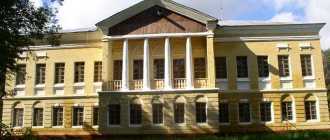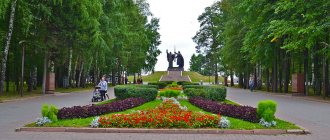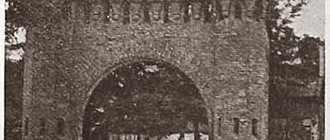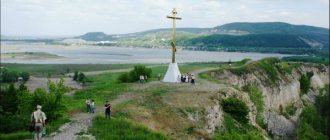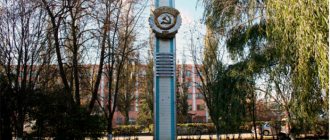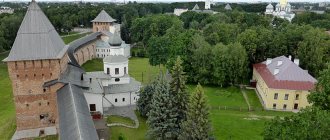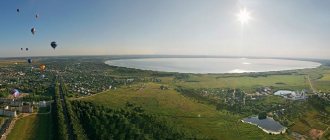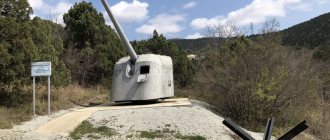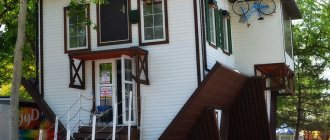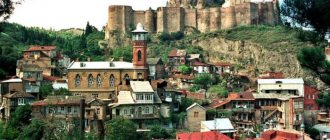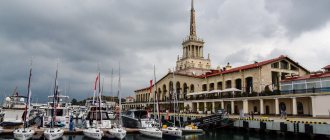Polotsk, the oldest city of White Rus', is located in the geographical center of Europe. It has stood for more than a millennium at the confluence of the Western Dvina and Polot rivers. The history of modern Belarus began with him.
The townspeople treat their famous city with care and love. They approach the placement of exhibitions in a variety of buildings with extraordinary creativity. They find new topics, place unusual accents when looking at their history, turning Polotsk into a museum city.
Hundreds of thousands of tourists and pilgrims come to this quiet provincial town every year: to see the reflection of an elegant basilica in the quiet waters of the river, listen to a concert in an ancient temple, look into the water tower, see the museum-reserve and the museum of one street.
What you can visit around Polotsk or on the way here from other cities of Belarus - lakes, nature reserves, memorials and museums in an overview of the main places in the country.
Sights of Polotsk
The former capital of the most powerful Principality of Polotsk is replete with museums on every street, ancient temples, monuments to great historical figures and war heroes, cozy cafes and chic restaurants, art galleries and libraries. It’s amazing what a complex network of attractions the bright city of Polotsk offers, and how tightly the parts of the city are intertwined with each other with picturesque bridges, because such a seemingly small settlement is actually divided by rivers in several directions. So what to see in Polotsk in 2-3 days?
This material will help you understand what attractions of the city are interesting to you. You will be able to plan your route in advance and understand which places are worth visiting first. After reading the article, you will once again be convinced that you want to visit this vibrant city and get vivid memories of this trip. So, here are the attractions that will be discussed in this article.
- St. Sophia Cathedral, Borisov stone
- Monument to Euphrosyne of Polotsk, bridge over the Polota River
- Red Bridge, Spaso-Efrosinevsky Monastery
- Nizhne-Pokrovskaya street, Epiphany Cathedral
- Church of St. Andrew Boboli, Local Lore Museum
- Polotsk State University, Art Gallery
- Museum of Belarusian Book Printing, Monument to the Krivichi People
- F. Skorina Avenue, monument to Francis Skorina
- Monument to Simeon of Polotsk, monument to the letter “ў”
- Monument "Geographical Center of Europe"
- Monument to 23 Guardsmen, monument to Vseslav the Magician
- Museum of Traditional Hand Weaving of Poozerie
- Museum of Medieval Chivalry, House of Peter I
- Monument to the heroes of the Patriotic War of 1812
- Polotsk Museum of Military Glory, Mound of Immortality
- Children's Museum, Natural and Ecological Museum
- Cafe "Damian", sports bar "Upper Castle"
- Bezdedovichi village, Rimsky-Korsakov estate
- Village of Bikulnichi, group of stones “Yanovo”
- Nature reserve "Kozyansky", Recreation center "Skif" on Lake Chervyatka
At the bottom of the article there is a map on which you will find all the attractions. With its help, you can calmly navigate the city, enjoying a comfortable stay. You will also be able to think through the route of your trip around Polotsk in advance.
Pages of history
The Museum of Book Printing in Polotsk opened on September 8, 1990, on the day of the 500th anniversary of Francis Skaryna. The famous Belarusian philosopher, educator and pioneer of printing was a native of Polotsk. It is no coincidence that one of the central streets of the city bears his name - Francysk Skaryna Avenue.
The museum is located in the Brotherhood building of the former Epiphany Monastery. The building is an architectural monument of the 18th century. And in the photograph you can see the domes of the Epiphany Cathedral itself.
What to see in Polotsk - day 1
Polotsk is beautiful at any time of the year. This city is remarkable for travelers because it is rich in colorful park areas (which is especially good for lovers of green forests and the shine of the river surface), as well as historical and architectural monuments and museums that allow you to contemplate beauty in both the heat and the cold.
We suggest you divide your walk around Polotsk into two thematic days. On the first day, you will get acquainted with the spiritual page of the history of the city, visiting St. Sophia Cathedral and other churches, walking along the streets of the great enlighteners, plunging into the world that surrounded the leaders of world history and education, and stopping separately at the monuments of each of them: Euphrosyne of Polotsk, whose courage can Jeanne D'Arc herself would envy the first book printer Francis Skaryna and the philosopher-educator, translator, and teacher Simeon of Polotsk.
Saint Sophia Cathedral
Saint Sophia Cathedral
St. Sophia Cathedral is the first stone temple on the territory of the Republic of Belarus. But it is not only the construction material that distinguishes St. Sophia Cathedral from other religious architectural monuments. This majestic structure was erected back in the 11th century during the reign of the Polotsk prince Vseslav the Magician. Thus, the monument to the independence of the Grand Duchy combined the traditions of Byzantine canons and Polotsk architecture.
Today St. Sophia Cathedral is the religious center of Belarus. The interior of the cathedral is truly beautiful. A luxurious atmosphere is created in the interior with the help of stucco decorations, figured cornices and baroque columns. What about the frescoes? Have you heard that on the walls of the St. Sophia Cathedral a copy of Leonardo da Vinci’s “The Last Supper” and the work of the Savior Not Made by Hands have been preserved to this day with minimal damage. If not, hurry up to witness the history of religious art.
Borisov stone
Borisov stone
Another attraction you can visit right next to the temple is the large boulder “Borisov Stone”. Borisov stones are boulders with carved crosses and the inscription “Lord, help your servant Boris.” Many such “memorials” can be found throughout northern Belarus, as they were left mainly on the banks of the Western Dvina.
One of those huge ancient boulders, erected by the son of the Drutsk prince Boris in honor of his deceased father, is located within walking distance from the St. Sophia Cathedral. The Boris stone in Polotsk is distinguished by the appearance of a cross carved on the surface - four-pointed instead of the patriarchal six-pointed one.
In the center of Polotsk there are the best housing options, based on price and reviews:
- Mini-hotel "Gostiny Dvor Polotsk". Rating: 8.7 based on 356 reviews. Price $20.
- Apartments Freedom Polotsk. Rating: 9.8 based on 175 reviews. Price $30.
- Art House Apartments. Rating: 9.6 based on 78 reviews. Price $25.
- Popular Hotel "Dvina". Rating: 9.2 based on 502 reviews. Price $30.
Monument to Euphrosyne of Polotsk
Monument to Euphrosyne of Polotsk
Euphrosyne of Polotsk is an educator and the first holy woman recognized on the territory of Belarus. Through her command and efforts, the Transfiguration Church, the Church of the Blessed Virgin Mary and the Spaso-Efrosinevsky Monastery were erected, which you will visit on your own any minute.
In the sculptural composition of the Belarusian sculptor Igor Golubev, Euphrosyne of Polotsk is depicted with the cross of Lazar Bogsha in her hands, dressed in monastic robes. But do not be deceived by the stern expression on the face of the beautiful woman in front of you - Euphrosyne of Polotsk has been blessing her fellow countrymen for centuries.
Bridge over the Polota River
Bridge over the Polota River
Polotsk is a city of bridges. And it’s no wonder that the locals call the settlement so unusually, since the city stands on three rivers at once. On the way from St. Sophia Cathedral to the previously mentioned Spaso-Efrosyne Monastery, there is an extremely interesting bridge, namely a suspension bridge over the small river Polota.
From the elevated position on the bank of the bridge there are amazing views of the northern part of the city in a lush frame of tree branches in the park area. The bridge is very popular among tourists and townspeople due to its unique design and the peaceful landscape around it.
Local guides will tell you as much as possible about the city on these excursions:
- Auto-pedestrian walk through the center of Polotsk. Rating: 5.0 based on 16 reviews. Price 35 € (for 1-10 people)
- Excursion - Secrets of ancient Polotsk. Rating: 5.0 based on 18 reviews. Price 38 € (for 1-10 people)
Red Bridge
Red Bridge
For the free movement of Polotsk residents, local areas are connected by numerous bridges: from impressive and bulky buildings to almost invisible suspension bridges, as if stretching from the pages of a fairy tale collection. One of the Polotsk bridges, Red, is a historical monument.
A representative of the first category is the Red Bridge. But do not think that this name was given to the bridge by the red bricks with which the railings of the structure are decorated. In the 19th century, so distant for us, the Red Bridge, being then still wooden, was completely covered in the blood of those who fell in the battle of 1812. In the 20th century, the bridge was reconstructed, but the memory of the heroes of the Patriotic War of 1812 remained in the table located right there, next to the modern structure.
Spaso-Efrosyne Monastery
Spaso-Efrosyne Monastery
Another one of the largest Orthodox centers in Belarus, the oldest monastery and the place of residence and educational activities of Euphrosyne of Polotsk is the Spaso-Efrosyne Monastery. Today the monastery houses a copy of the legendary Cross of Euphrosyne of Polotsk, made by sculptor Nikolai Kuzmich, and the relics of the saint. Throughout its long history, the monastery has changed many owners, and only in the 19th century it became Orthodox again.
Among other things, the Spaso-Efrosyne Monastery is known as the oldest architectural monument in the city, and includes a bell tower, a refectory, the Holy Cross Cathedral, the Church of the Transfiguration - in a word, a huge number of attractions worth your attention.
Nizhne-Pokrovskaya street
Nizhne-Pokrovskaya street
The parade of luxurious streets, whose development can be proud of examples of residential architecture of the 18th century, opens with Nizhne-Pokrovskaya Street. Undoubtedly, a walk along Nizhne-Pokrovskaya Street will bring pleasure to even the most selective tourist, because the brilliant Western Dvina, impressive in size, will accompany him all the way.
The street, small at first glance, houses many religious and historical attractions. It is here that you will find the Museum of Belarusian Printing, the Children's Museum, interesting graffiti with the history of the city and, of course, the Epiphany Cathedral.
Epiphany Cathedral
Epiphany Cathedral
The Epiphany Cathedral in Polotsk once belonged to the Holy Epiphany Monastery, which was erected back in the 16th century. The temple itself was built in the 18th century, which, however, does not in any way detract from its historical value as an architectural monument.
The interior decoration of the Epiphany Cathedral does not at all exude luxury, but is modest and monochromatic, which, among other things, distinguishes it from other representatives of Orthodox architecture. At the moment, work is underway in the cathedral to restore the frescoes of the 18th century; you can already study 3 fragments.
Church of St. Andrew Boboli
Church of St. Andrew Boboli
The newest of all the churches presented in today’s selection is the Church of St. Andrew Boboli, which was built in 1997. Despite the relatively modern construction, the church looks very harmonious; we definitely recommend visiting it for tourists interested in spiritual enlightenment.
Andrei Bobolya was canonized by the Catholic Church in connection with the tragic events in his biography. Being a Jesuit preacher, Andrei Bobola was brutally murdered in 1657, but until the last minute of his life he remained faithful to religion, despite the indescribable torment that the man experienced.
Polotsk State University
Polotsk State University
We present to your attention the first higher educational institution on the territory of Belarus - Polotsk State University. From a distance, this majestic building is distinguished by its delicate milky color and walls “faceted” with buttresses. It is no wonder that the university has such outstanding architecture - it was founded as a Jesuit college back in 1580. For centuries this college was the richest and most famous in Eastern European lands. This is what it is like, multi-religious Polotsk!
Today, the Polotsk University houses an art gallery, as well as the famous clock of the university - every hour figures of famous natives of Polotsk greet passers-by. But the most amazing thing is that in the long corridors of the university you can stumble upon a talking head, ready to answer any question in five languages. Don't be so quick to pass out when this happens. This head is a copy of the amazing all-knowing mechanism of the 18th century.
Art Gallery
Art Gallery
One of the buildings of the former college and today's Polotsk State University is occupied by the previously mentioned Art Gallery. The place is popular not only among local students, but also among out-of-town tourists, and for good reason: an impressive collection of works of art from various historical eras and their representatives is collected here.
The art gallery houses frescoes from the 12th century, icons from the 18th to 20th centuries, as well as an extensive collection of works by 20th century artists, including many noteworthy examples of portraiture. Fans of the work of the Belarusian “space” artist Yazep Drozdovich are definitely worth a look at the gallery - some of his paintings are located here.
Museum of Belarusian Printing
Museum of Belarusian Printing
Polotsk is a unique city. Where else can you find a museum-reserve that includes 11 branches throughout the city! We will intrigue you a little before the second day of the trip by offering you a unique museum of Belarusian book printing for your visit. There is no way to miss this attraction, since Polotsk is not only the largest religious center of Belarus, but also a center of printing, education, the development of writing and literary art... Why? Find out the history of printing at the museum!
The museum is an architectural monument of the 18th century, when the building belonged to the Polotsk Monastery of the Apparition of God. After walking through 15 exhibition halls, you will be told and shown in detail the history of Belarusian book printing, giving you the opportunity to get acquainted with ancient educational publications. You can visit a collection of old postcards, calendars and booklets in an indescribable atmosphere. Don't forget to check out the museum-library of Simeon of Polotsk, which is located in the same building as the museum of printing.
Francysk Skaryna Avenue
Francysk Skaryna Avenue
Polotsk is truly a city of atmospheric streets and monuments. Another street-story, street-museum - Francysk Skaryna Avenue. This avenue is the main and most visited street in the historical center of the glorious city of Polotsk, which connects Svoboda Square with Yubileinaya Street.
The avenue is a wide boulevard, when walking along it you can get acquainted with a number of monuments: the monument to V.I. Lenin, the letter “Ў”, Francis Skaryna and many others. Also along the avenue, residential buildings from the 18th and 19th centuries have been partially preserved. Also located here are the buildings of the city administration and the former house of the governor.
Here are more inexpensive housing options in the very center of Polotsk:
- Apartments Irina. Rating: 9.7 based on 19 reviews. Price $20.
- Apartment "On Franciska Skaryny 26". Rating: 9.5 based on 149 reviews. Price $30.
- Apartment Gogol 13. Rating - 9.5 based on 83 reviews. Price $30.
- Apartments RELAX PLACE. Rating: 9.3 based on 40 reviews. Price $25.
Monument to Francis Skaryna
Monument to Francis Skaryna
Francysk Skaryna is an outstanding personality. Having successfully graduated from the medical faculty of the Krakow Academy with the title of doctor, Skaryny became famous as the creator of the first printed book, which was the “Psalter,” and the opener of the first printing house in Europe. During his unfortunately not long life, Francis Skaryna mastered many crafts and died as a recognized genius, philosopher and educator. It is difficult to overestimate his contribution to the dissemination of literature among the poorly educated and poor population.
The monument to Francis Skaryna was erected in 1974; a whole team of sculptors and architects worked on it. Here the great literary figure is depicted with a book in his left hand - a symbol of knowledge. With his right hand, the pioneer printer rests his head in a thoughtful pose.
Monument to Simeon of Polotsk
Monument to Simeon of Polotsk
Samuil Gavrilovich Petrovsky-Sitnyakovich, or, as he is better known to world history, Simeon of Polotsk, was a great Belarusian scientist and poet, playwright, translator and theologian. Simeon of Polotsk is known for his curiosity about poetic form and literary experiments. Thus, in Polotsky’s work there are poems in the form of an eight-pointed star, a cross, a heart, a rhombus and many others. But the writer set his main task to spread spiritual ideas and the Church Slavonic language.
As we noted earlier, the monument is located in the historical center of the city - on Francysk Skaryna Avenue. It was installed exactly on the day of celebration of Belarusian writing in 2003. Next to the majestic statue of the Belarusian enlightener, there is a picturesque square where you can join the company of Simeon of Polotsk, thoughtfully observing the measured life of the townspeople.
Monument to the letter "U neskladovae"
Monument to the letter "U neskladovae"
While walking along Francysk Skaryna Avenue, you can come across many attractions, each of which carries a separate story. In 2003, on the tenth anniversary of the Day of Belarusian Literature, a monument to “Ў” was erected in the very center of Polotsk, which native speakers of the Russian language had never seen.
Probably the most unusual monument in this selection of attractions. The monument “Ў” is unique in its kind, because in no other language in the world, besides Belarusian, does such a letter exist. Therefore, “U neskladovae” is a unique symbol of Belarusian culture and language. We can conclude that the monument glorifies the uniqueness of one letter, which would be wrong, because the statue praises the entire Belarusian people, the distinctive features of our culture and traditions.
Library of Simeon of Polotsk
The museum has a very interesting exhibition - the library of Simeon of Polotsk. I’ll be honest: this is my favorite room. There is some special atmosphere here.
The exhibition is designed in the form of a functioning medieval European library. It tells about the life and work of the famous poet, playwright and educator of the 17th century Simeon of Polotsk. Like any library, it has its own “reading room”.
On the walls you can see texts written in the form of a variety of shapes.
An elegant wooden staircase leads to the second floor. There are catalogs and bookcases there. And in the center of the hall there is a huge globe.
What to see and where to go in Polotsk - day 2
On the second day of your stay in Polotsk, we recommend that you definitely visit the historical places of this city. Get acquainted with the history of Polotsk in the Museum of Local Lore, receive a certificate that you have visited the geographical center of Europe (or very close to it), learn about the tragic part of the history of the Principality of Polotsk by visiting the monuments to the Krivichi people and Vseslav the Magician, plunge into childhood with the Children's Museum and learn a little more about the surrounding world in the Natural and Ecological Museum.
And finally, get acquainted with the Belarusian national cuisine in the Damian and Upper Castle cafes in a pleasant, almost homely atmosphere with friendly staff and no less pleasant impressions of the city, which you walked the length and breadth of in two days.
Monument "Geographical Center of Europe"
Monument "Geographical Center of Europe"
Although many opinions can be heard regarding the current location of the geographical center of Europe, according to one of them, the center can be found 48 kilometers from Polotsk, near Lake Sho. In fact, everything depends on the calculation method and the location of the borders of Europe.
Local authorities erected a monument to the “Geographical Center of Europe” to perpetuate its location on the territory of Belarus. In plan, the monument represents a compass rose at the base and the northern hemisphere of the Earth with a map of Europe as the central part of the statue. But that's not all. Above the map rise the crossed branches of the meridians, which support a small boat - the symbol of Polotsk. In a word, it’s better to look once than to read the description a hundred times!
Museum of Local Lore
Museum of Local Lore
The Polotsk Museum of Local Lore will surprise you even before you enter. The fact is that the museum is located in the building of a former Lutheran church, founded in the 19-20 centuries. The local history museum will tell you the history of Polotsk, giving you the opportunity to get acquainted with more than 1000 exhibits.
The museum's collection is unique, because visitors can see so many archaeological and historical cultural heritage objects - from mammoth bones to a collection of medieval weapons. A significant part of the exhibition is dedicated to Jesuit traditions, as well as important historical events in the formation of Polotsk (obtaining the Magdeburg right to self-government, the Battle of Grunwald and many others). The local history museum is also famous for its interactive methods of conducting excursions, including on-site events and sightseeing tours for schoolchildren.
Monument to the Krivichs
Monument to the Krivichs
The monument to the Krivichs, an East Slavic tribe who are the founders of the city, appeared in Polotsk in 2001. The sculpture is made in the form of a boat, headed by Princess Rogneda and her son Izyaslav, who laid the foundation for the Polotsk dynasty of princes.
However, behind the exploits of the courageous Rogneda there is a tragic past of a woman - a marriage with an unloved person and a failed attempt at self-defense from her tyrant husband. Together with Izyaslav, who stood up for his mother, Rogneda was expelled to the Principality of Polotsk. However, later Izyaslav headed one of the most powerful principalities in Belarus.
Monument to Vseslav the Magician
Monument to Vseslav the Magician
Vseslav Bryacheslavovich is one of the greatest rulers of the Principality of Polotsk. His reign gave the lands unprecedented prosperity and glory. It was by order of Prince Vseslav that the St. Sophia Cathedral was built. Later he was elected Grand Duke of Kyiv, but remained on the throne for only 7 months, after which he returned to the Polotsk lands.
Many legends circulated around the Grand Duke of Polotsk, Vseslav Bryacheslavovich. It was rumored that the birth of the great ruler was connected with pagan rituals and magic, that he could turn into a wolf and move from one point of the Earth to another in the blink of an eye. This is how the nickname Vseslav the Magician appeared.
Museum of Traditional Hand Weaving of Poozerie
Museum of Traditional Hand Weaving of Poozerie
In the center of Polotsk there is a unique historical and craft museum. Be careful when choosing to visit the Poozerie Museum of Traditional Hand Weaving, because they will tell you everything and even more about this process. Research staff of this museum will tell you about the life cycle of flax, the process of obtaining fiber, types of traditional hand-made quality and the features of Belarusian folk costume.
The museum also hosts an interesting event for newlyweds - the wedding ceremony “How two rivers merged...”, which means the blessing of the ancestors for the couple, and many other cultural celebrations, the participants of which can get acquainted with the most widespread type of Belarusian folk craft and test their strength in this difficult in fact.
Museum of Medieval Knighthood
Museum of Medieval Knighthood
The Museum of Medieval Chivalry is known throughout the country and far beyond its borders. This branch of the city historical and cultural museum consists of three halls, and the interior here corresponds to all the trends of the Middle Ages. The most fascinating thing is the collection of torture devices with various tools of executioners and skeletons of those who once died at their hands. The exhibition fund here is rich in medieval weapons, of course: ancient crossbows, spears and arrows, as well as swords of warriors.
For those who are not tempted by the prospect of strolling along the monuments of bloody history, the halls of the Museum of Medieval Chivalry display objects of medieval life in the authentic atmosphere of that time. An interesting fact is that the museum’s fund was collected by one person, not a historian or archaeologist, but an enthusiast who realized the desire to share a piece of history with others.
House of Peter I
House of Peter I
The house of Peter I was built in 1692 for the arrival of the ruler, who intended to lead the Russian army during the Northern War. The residential building is an architectural monument in which the elements of the Baroque style used are clearly visible.
Today the House houses the exhibition “Walk along Nizhne-Pokrovskaya, or Return to Polotsk of the early 20th century.” This exhibition is unique, since nowhere else in Belarus you will find an exhibition dedicated to the history of one street.
Monument to the heroes of the Patriotic War of 1812
Monument to the heroes of the Patriotic War of 1812
The monument to the heroes of the Patriotic War of 1812 has its own history. Its original version was installed on the square back in 1850, when the events of the war were fresh in the memory of the city's population and the wounds of losses had not healed. However, in the 20th century the monument was destroyed.
It was possible to restore the heritage only at the beginning of the 21st century, in 2009, when the monument was restored by the local organization “Technolit”. Today, everyone can examine the structure of the monument, which is a 10-meter truncated pyramid topped with a scaly dome and a cross.
Monument to 23 Guardsmen
Monument to 23 Guardsmen
To this day, Polotsk retains the memory of the victims of the Great Patriotic War and the fate of Polotsk residents who participated in the hostilities that unfolded in alarming numbers on the city’s territory since July 1941. Belarus took the blow of the German occupiers as one of the first republics, and Polotsk residents distinguished themselves with courage and bravery in numerous battles for their homeland.
On the right bank of the picturesque Western Dvina River, which runs through Polotsk, there is a monument to the disturbing events of the Great Patriotic War. The monument perpetuates the feat of 23 guardsmen who, on July 3, 1944, captured a bridgehead on the bridge and held it from the troops of the fascist enemy until the arrival of Soviet troops. Undoubtedly, thanks to their courage and the power of the Soviet army, Polotsk was liberated from the German invaders the next day.
Polotsk Museum of Military Glory
Polotsk Museum of Military Glory
The Polotsk Museum of Military Glory was opened in 1971 and is one of the branches of the Polotsk Historical and Cultural Museum of the Reserve. In continuation of the historical theme of the day, we invite you to familiarize yourself with the worthy exposition of this organization.
The main fund, which includes more than 400 exhibit items, will tell the visitor about the history of the creation of the Polotsk fortified area and the events of the summer of 1944, when the fiercest battles for Polotsk and its preservation from the invaders were fought. During the Great Patriotic War, many partisan detachments and underground organizations operated on the territory of Polotsk, whose merits influenced the well-being of the settlement and, possibly, the outcome of military operations.
Mound of Immortality
Mound of Immortality
The Mound of Immortality is a distinctive memorial among those presented in Polotsk. The idea of the mound is to honor the memory of the Belarusians who died during the Great Patriotic War, but mainly the soldiers who liberated Polotsk from the occupiers.
The opening of the memorial took place in 1966. The mound was erected from the soil of mass graves and battlefields, as well as from the ashes of villages burned by the German invaders and land from the Brest Hero Fortress. At the top of the embankment there is a platform with a torch, which is lit in memory of the war heroes.
Children's Museum
Children's Museum
Today, this is the only museum entirely dedicated to the beautiful and pure time of childhood. As you may have guessed, the fund of the State Children's Museum is designed for a respected audience of young children, and the peculiarity of this organization is the fact that all exhibits are allowed to be picked up, touched and turned, examined and shown to parents, subtly hinting at their preferences. But the exhibits are not only toys.
The theme of the children's museum is the history of familiar things. In different halls of the institution you can get acquainted with ancient clocks and bells, fraught with the history of time, cameras and cameras from different years, gramophones, sound recording devices, samovars and many other things that are so familiar to us, but are becoming so distant. Thus, the exhibition is guaranteed to interest tourists of all ages.
Natural and Ecological Museum
Natural and Ecological Museum
Another museum that is part of the Polotsk Historical and Cultural Museum-Reserve. And again, the attraction attracts the tourist’s eye from afar - the museum’s exhibition is located in the building of a former water tower.
The uniqueness of the natural-ecological museum is that the staircase is located on the outside of the building and, gradually moving upward through the levels, the tourist travels along the “tree of life”. Each level tells about the diversity of biological species, the diversity of the world of Belarusian flora and fauna, nature reserves, game reserves and other types of protected areas. On the territory of the museum there is a lovely garden and a pond inhabited by small fish.
Cafe Damian
Cafe Damian
In search of delicious folk cuisine, comfort and quality service, you can wear out your legs. We have good news for you: in Polotsk you will definitely not encounter such a problem. The city is full of varied and relatively economical dining options, offering dishes to suit every taste.
We want to offer you a very specific place to rest and refresh yourself. Located opposite the Children's Museum, on Nizhne-Pokrovskaya Street, the Damian cafe is famous for its hospitality and sincere atmosphere. The menu contains dishes for every taste, and even the names will make you smile: “Hussars at Rest,” “Magic Pot” and many others.
Sports bar "Upper Castle"
Sports bar "Upper Castle"
Fans of sports broadcasts, home cooking and evenings with friends will love the Upper Castle cafe. The atmospheric hall is complemented by a billiard table and a bar. From the street you can hear the enticing smell of meat on the grill and the voices of satisfied visitors to the establishment.
The combination of pleasant and highly qualified staff, a variety of dishes, wallet-friendly prices and a cozy atmosphere makes this establishment a good choice for you and your family as a lunch venue. The sports bar “Upper Castle” will delight any visitor and allow you to relax after a hard day exploring Polotsk.
What to see in the vicinity of Polotsk
On the third day of exploring Polotsk, visit the outskirts of this town. Despite the fact that to visit these interesting places you will have to travel a little around the Polotsk region, believe me, it is worth it. We invite you to familiarize yourself with an example of estate architecture relevant to the 19th and 20th centuries represented by the Rimsky-Korsakov estate in the village of Bezdedovichi.
However, the highlight of the program, undoubtedly, are the “Belarusian Stonehenge” and the amazingly bright “Kozyansky” nature reserve. Solve the mystery of the pagan stone complex and find out what the ancient tribes of the Eastern Slavs wanted to tell us. Don’t miss the Kozyansky landscape reserve. Being anywhere in this magical place, you can enjoy the views of small lakes that stretch all the way to the horizon.
Rimsky-Korsakov Estate
Rimsky-Korsakov Estate
The first destination on our travel route through the Polotsk region will be an architectural monument, the Rimsky-Korsakov estate. In the village of Bezdedovichi, right in the middle of the estate ensemble, stands a magnificent house, built in all the fashionable architectural trends of the 20th century.
The estate was built by order of Alexander Alexandrovich Rimsky-Korsakov. Yes, yes, you were not mistaken, the association with the great Russian composer that flashed through your mind for a moment turned out to be false. But Alexander Alexandrovich was still Nikolai Andreevich’s brother-in-law and was a well-known political figure. It was through his efforts that the estate has survived to this day practically unchanged from the day it was built. Now it houses a hospital.
Group of stones “Yanovo”, or “Belarusian Stonehenge”
Belarusian Stonehenge, o. Yanovo
Not far from the village of Bikulnichi there is the most mysterious man-made composition of pink-red stones, which is probably the oldest in the territory of the Republic of Belarus. A group of stones on the shore of Lake Yanovo, or “Belarusian Stonehenge,” is a must-see for all lovers of archeology and the mysteries of distant history.
Scientists consider the most probable version of the origin of this building to be a temple in honor of the pagan deity Kupala, around whom rituals of celebrating the summer solstice were held, bonfires were burned and incendiary dances, bordering on madness, were held. The stones are laid out so that they form the letter P, the open side of which is directed towards Mount Volotovka. To this day, “Belarusian Stonehenge” arouses interest among archaeologists and historians, and gives goosebumps to the casual passerby.
Nature reserve "Kozyansky"
Nature reserve "Kozyansky"
The Vitebsk region is rich in protected areas, nature reserves and nature reserves. The north of the republic, in principle, can be described by a comprehensive name that will immediately tell you about the main advantage of the local landscape - Poozerye. Yes, yes, lovers of outdoor recreation or, say, nature excursions will definitely like the northern lakes.
The Kozyansky Republican Landscape Reserve is located on the border of two districts – Polotsk and Shumilsky. The reserve occupies at least 26 thousand hectares and is a complex of lowland swamps, lakes, water meadows and forests. This is where blue-eyed Belarus is, the lungs of Europe! Here you can see unique archaeological and historical monuments, and tourist recreation areas are organized.
Recreation center "Skif" on Lake Chervyatka
Recreation center "Skif"
From year to year, the Belarusian Lake District attracts more and more tourists. The picturesque north of the country, framed by a necklace of lakes and rivers, leaves no one indifferent. So the last attraction on our list, Chervyatka Lake, is ideal for a variety of tourism purposes: relaxation with family and friends, enjoying nature, recreation and relaxation at a recreation center and much more.
Lake Chervyatka (or, according to another translation, Chervyatko) is located less than 30 kilometers from Polotsk. You will probably not be able to swim in the lake due to its partially swampy and forested shores. However, this place is excellent for fishing: crucian carp, pike, and roach are found here. Fishing on the lake takes place in an organized manner. In addition, on the southern shore of the lake there is a recreation center “Skif”.
